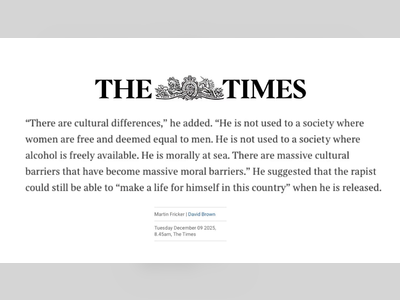
How the U.S. Tax Code Privileges White Families
Soon after I got my master’s degree in tax law from NYU in 1984, I started preparing my parents’ tax returns. They filed jointly, and what always stuck out to me was how comparable their incomes were. My mother worked as a nurse at an assisted-living facility, and my father was a plumber with the New York City Housing Authority. Some years, my father’s overtime would put him on top by a few hundred dollars; other years, my mother outearned him.
What I saw every year was what researchers call the “marriage penalty”: My parents, like many other married Black couples trying to pay for a mortgage, save for their children’s future, and afford health care, were paying higher taxes under the joint return than they would have had they remained single and filed separately. What I sensed then—and what 25 years of academic research have revealed to me in greater detail since—was that changes to the U.S. tax code typically benefit white taxpayers, while putting Black taxpayers at a further disadvantage, even when Black and white Americans have made the same life choices. Subsidies for homeownership benefit white homeowners more than Black homeowners. Tax breaks for workers benefit white workers more than Black workers. And tax reform has always been a fight over which white Americans get tax cuts, with Black Americans paying the price, as I document in my book The Whiteness of Wealth: How the Tax System Impoverishes Black Americans—And How We Can Fix It.
Recommended Reading
The U.S. tax code can seem like a neutral, or at least equally punishing, system. But that misses how it has privileged white people—particularly white married couples—and preserved the racial inequality that has long defined America. Take the joint return, for instance, a policy that was designed to give a tax break to married (heterosexual) couples in which only the husband worked in the paid labor market. That setup favored white couples, whose familial structure was most likely to fit its mold. And it came at the expense of Black married couples, including my parents.
That inequality flows from the joint tax return’s origins, a story that begins with an affluent couple named Henry and Charlotte Seaborn, members of the Seattle Yacht Club, who married in 1902. Henry was the vice president of a shipbuilding corporation, Skinner & Eddy, and Charlotte was a stay-at-home spouse. At the time, there was no such thing as “married filing jointly” in the way we understand it today. Each taxpayer filed his or her own return only if they had income greater than the exemption amount, which meant that Henry would file a return, but not Charlotte. By 1927, almost 98 percent of Americans paid no income tax, because their income did not exceed the exemption. The revenues needed to fund the government did not require any additional taxpayer dollars. Prior to World War II, our progressive tax system placed a target on Henry’s back.
But Henry had the wealth to do something about it, and in 1927, he and his lawyers figured out a workaround. Henry Seaborn’s taxable income for the year was $38,500 (well over $500,000 in today’s dollars), and his team came up with an idea: If he could treat half of his income as Charlotte’s, he could save $703.01 ($10,000 in today’s dollars) in taxes. Why? Because the progressive tax system taxes income at higher rates as income increases. In other words, the rate that applies to my first dollar of taxable income is lower than the rate that applies to my last. If, however, each spouse were taxed on half of Henry’s income, the rate applicable to the half now characterized as Charlotte’s would be significantly less than if it were part of Henry’s total.
Washington was a community-property state, which meant that, legally, Charlotte had a right to half of Henry’s income. So they each filed individual tax returns, with Charlotte claiming her “half” of Henry’s income on hers. The IRS disapproved and said that Henry should have been taxed on all of the income, and therefore he owed the additional taxes.
Henry paid up, but then he went to court to fight. He won at the district-court level, but the IRS appealed. His case went all the way to the Supreme Court, where the Seaborns won. Their win, however, followed the loss by a different white taxpayer who tried to transfer half his income to his stay-at-home spouse by contract—not because of community-property law—and the Supreme Court ruled against him. That taxpayer loss, coupled with the Seaborns’ victory, meant that now the tax liability for married couples would turn on whether they lived in a community-property state.
That disparity ultimately led to Congress enacting the joint return in 1948, which allowed all married couples like the Seaborns—with a husband who works in the paid labor market and a wife who stays at home—to pay less in taxes, regardless of where they lived: a marriage bonus. The joint return gave tax breaks to single-wage-earner couples, but nothing to households where both spouses worked. So what? Weren’t we in a world where only the highest-earning Americans paid taxes? But WWII had changed everything.
Funding the war required tax revenue—lots of it—and from 1940 to 1945, income-tax rolls increased from 7 million to 42 million Americans because the exemption amount was lowered and more people now owed taxes. That number now included many Black Americans, and Black wives have always been likelier to work in the paid labor market than white wives. The reasons are varied, but one of the most significant is that Black men are subject to labor-market racial discrimination, which makes their income lower than that of white men and their labor-force participation less stable because of higher unemployment rates. Also, research suggests that Black married couples at all income levels are more egalitarian when it comes to sharing power than their white peers. While white married couples such as the Seaborns were getting a tax cut with the advent of the joint return, most Black married couples were not.
Everything comes down to who has a say. In 1948, only two Black Americans were voting members of Congress, and the law of the land was “separate but equal.” Black Americans were paying taxes for government benefits that excluded them. Over time, those white people who did not benefit from the joint return figured out new ways to shape the system to their needs. Consider, for example, the situation of single white men. These men didn’t like how the joint return gave their married co-workers tax breaks that they didn’t have access to. They called it the “single’s penalty,” and they lobbied Congress. In 1969, they received a different rate structure that decreased the marriage bonus in order to decrease the single’s penalty. This meant that the taxes of married couples increased, but the hike was not the worst part. The worst came for the couples in which husbands and wives earned roughly equal amounts of income. Those couples’ tax bills would go up, and now—along with marriage bonuses—they had marriage penalties. And marriage-penalty couples happened to be disproportionately Black. In order for single white men to pay less in taxes, married Black couples such as my parents would have to pay more. They would pay more for decades, until my father’s death in 1994.
Over time, as more and more white wives entered the labor market, more married white couples also paid the marriage penalty. My research, based on 1990 Census Bureau data, shows that although most married white couples got a marriage bonus, the married white couples who were most likely to pay the marriage penalty were in households earning $60,000 to $90,000 a year. This marginally changed following the 2001 and 2003 Bush tax cuts, which provided some marriage-penalty relief. Based on 2010 Census Bureau data, I found that for households with income totaling $50,000 to $200,000, a greater percentage of married white couples are paying higher taxes than getting a tax break. A Treasury report predicted that for 2016, while 51 percent of married couples would get a marriage bonus, 40 percent would pay a penalty.
That set the stage for the 2017 Trump tax cuts. Suddenly, marriage-penalty relief was part of the agenda, without explanation in the legislative history other than rote statements such as “Married couples will no longer be penalized just for their choice to be married.” The Trump tax cuts temporarily eliminated the marriage penalty for nearly everyone. That was accomplished by a change to the rate structure that doubled the bracket for a single taxpayer, to account for the possibility of two equal earners. Those rate-structure changes ignored households at the low end that were eligible for the earned-income tax credit, and those at the high end. Households at the low end continue to face marriage penalties, but the same is not true for high-end married couples. Why? Because, as I found in my research, most of those high-income white married couples are in marriage bonus households, whereas their Black peers are more likely to be in marriage penalty households, even at high income levels. With the Trump tax cuts, the marriage penalty applicable to high-income white households has been largely theoretical—but it remains the reality for their Black peers.
For the unequal effects of marriage in the tax code, at least, the solution is easy: Return to our progressive beginnings and allow only individual tax returns. The decision on whether to get married should never have been allowed to affect anyone’s tax bill. Canada has had an individual-filing-based system for more than 100 years. Justice requires the married Henrys of the world to pay the same as the single Henrys. Racial justice requires that married couples like my parents don’t face a marriage penalty, and that they don’t get left behind when tax cuts come.











